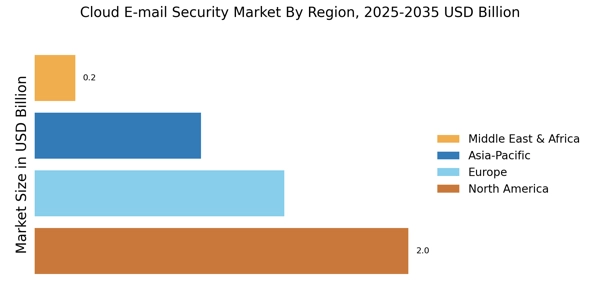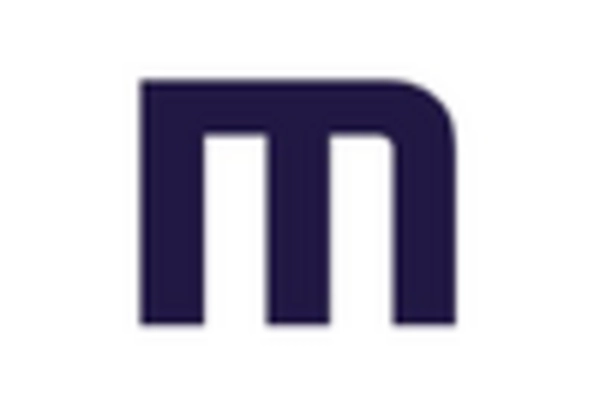The Cloud E-mail Security Market is currently characterized by a dynamic competitive landscape, driven by the increasing need for robust cybersecurity measures amid rising threats. Major players such as Microsoft (US), Google (US), and Proofpoint (US) are at the forefront, each adopting distinct strategies to enhance their market positioning. Microsoft (US) emphasizes innovation through its integration of advanced AI capabilities into its security solutions, while Google (US) focuses on leveraging its extensive cloud infrastructure to provide scalable and efficient security services. Proofpoint (US), on the other hand, has carved a niche by specializing in targeted threat protection and compliance solutions, thereby addressing specific customer needs. Collectively, these strategies contribute to a competitive environment that is increasingly focused on technological advancement and customer-centric solutions.
In terms of business tactics, companies are increasingly localizing their operations and optimizing supply chains to enhance service delivery and responsiveness. The Cloud E-mail Security Market appears moderately fragmented, with a mix of established players and emerging startups. This structure allows for a diverse range of offerings, although the influence of key players like Microsoft (US) and Google (US) remains substantial, often setting industry standards that others strive to meet.
In August 2025, Microsoft (US) announced the launch of its new AI-driven security platform, designed to provide real-time threat detection and response capabilities. This strategic move underscores Microsoft's commitment to innovation and positions it as a leader in proactive cybersecurity measures. By harnessing AI, Microsoft aims to not only enhance its product offerings but also to address the evolving landscape of cyber threats more effectively.
Similarly, in July 2025, Proofpoint (US) expanded its partnership with a leading cloud service provider to enhance its email security solutions. This collaboration is significant as it allows Proofpoint to integrate its advanced threat intelligence capabilities with the cloud provider's infrastructure, thereby offering customers a more comprehensive security solution. Such partnerships are indicative of a broader trend where companies seek to leverage synergies to enhance their service offerings.
In September 2025, Google (US) unveiled a new suite of security features aimed at small and medium-sized enterprises (SMEs), reflecting a strategic focus on expanding its customer base. This initiative not only demonstrates Google's commitment to inclusivity in cybersecurity but also highlights the growing recognition of SMEs as a vital market segment. By tailoring solutions to meet the specific needs of SMEs, Google positions itself to capture a significant share of this burgeoning market.
As of October 2025, the Cloud E-mail Security Market is witnessing trends that emphasize digitalization, AI integration, and sustainability. Strategic alliances are increasingly shaping the competitive landscape, enabling companies to pool resources and expertise to deliver enhanced solutions. Looking ahead, it is likely that competitive differentiation will evolve, with a shift from traditional price-based competition towards a focus on innovation, technological advancement, and supply chain reliability. This evolution suggests that companies that prioritize these aspects will be better positioned to thrive in an increasingly complex market.


















Leave a Comment